The war between iOS and Android enthusiasts has never been more heated. With last week’s release of Apple’s annual mobile operating system update, iOS 7, and the release of Android 4.3 Jelly Bean just under a month ago, it is time once again for a clash of the mobile operating systems.
User Interface

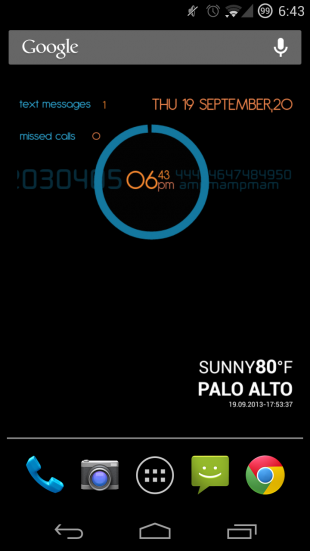
iOS has always strived to be the simplest and stablest mobile operating system around and my first impression at iOS 7 seem to echo just that. The additions of a new, quick-glance pull-up menu, improved notification drop down menu, and new multitasking support have improved the user experience. The iOS experience seems to be moving to something similar of that of Android with many of these new additions looking suspiciously like features seen before with Android.
Devoted iOS enthusiasts and skeptics of Android have always complained that Android is too complex to use and has a steep learning curve, but Google’s new 4.3 Jelly Bean update begs to differ. Jelly Bean is quick, responsive, and a joy to use. All of your apps are consolidated in a single app drawer, leaving your home pages free of clutter to customize and organize the way you want, be it with widgets or your favorite apps.
What really caught my attention with the new iOS was the new design of the icons: flat and elegant with a matte finish which is a huge upgrade from the round, bubbly look before. However, the design of the user interface overall is a miss. An attempt to use minimalistic fonts, mellow colors, and a frosted glass background ends up looking annoyingly elitist. In contrast, Google’s stock version of Jelly Bean pulls off the minimalistic look very well with a black and white system interface with a touch of cyan.
Winner: Jelly Bean
Daily Useage
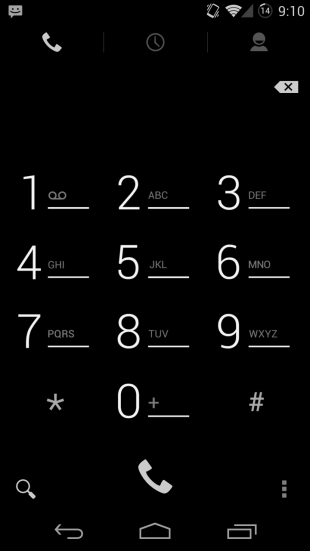
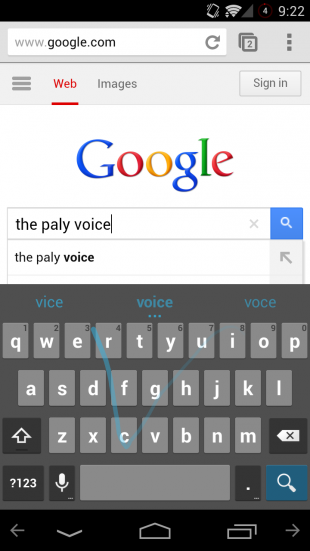
iOS has a reputation for being relatively bug-free and stable which remains to be true in this new iOS 7 update. Pages glide smoothly across the home screen and I have not yet had an app crash yet. On Jelly Bean, I have noticed that I will get an occasional “The application has stopped unexpectedly. Please try again” pop up every once in awhile, which can be somewhat irritating.
iOS 7’s new addition of a pull up menu for access to music, commonly used settings, and helpful applications has made the iOS experience very pleasant to use. For example, instead of exiting your browser window to turn on Wi-Fi, you can simply pull up a menu and enable it without leaving the browser app. Jelly Bean has a similar feature in the form of a drop-down menu for notifications and common settings.
While the two operating systems overlap in many aspects of usability, two Android features really outshine the iOS competition when it comes to daily useage. Unlike iOS 7, where to dial a number from your contacts you have search through a long list of names, Android has a smart-dialing feature which allows you to type names of contacts with their associated letters on the number pad directly into the dialer. For example, say that you are looking to call a person named John. Instead of searching for him in your contacts you can simply dial 5646 to “spell” out his name to call. Another feature is Jelly Bean’s swipe to type keyboard which allows you to type words by dragging your fingers over the letters that spell the word. iOS does not yet have this function and it makes typing on a smartphone fast and efficient.
Winner:
Stability- iOS 7
Usability- Jelly Bean
Camera
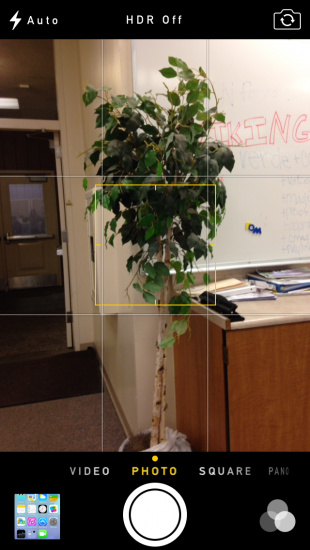
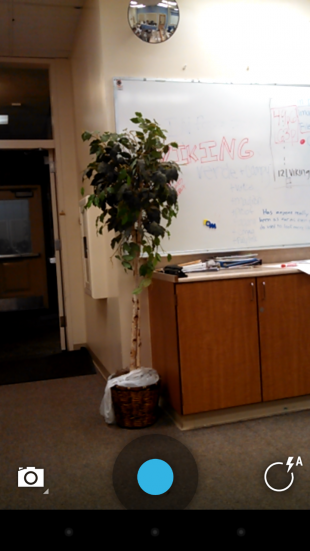
The camera software on the iOS 7 is brilliantly simple. The layout is easy on the eyes and is not cluttered with gimmicky settings. Instead, a swipe to the left or right allows you to change different shooting modes such as video, panorama, or square-cropped shots. The camera software is also equipped with photo filters to provide an instagram-esque feel to your photos.
The camera on stock (straight from Google) Android 4.3 is simple enough for the average user to use, but is lacking in the overwhelmingness of its camera settings. With a hold of a finger, a semi-circle with camera settings for such things as brightness, contrast, and panorama mode appears. For some this may seem helpful, but in my experiences, it has been annoying and hard to navigate through. However, the camera software is not the same experience throughout all android phones as manufacturers such as HTC or Samsung tend to use their own modified camera softwares.
Winner: iOS 7
Battery Life
According to Extreme Tech, updgrading your version of iOS to iOS 7 will cause a decrease in battery life. This should not be an issue for most iOS 7 devices — that is except for the iPhone 5. Data from Extreme Tech shows the iPhone 5 experiences a drop in battery life from 661 minutes of Wi-Fi use to a meager 444 minutes after the update. Other devices should not experience such horrendous drops in battery life and will lose 10 to 30 minutes of web browsing at most. From my experience with iOS 7 running on a iPhone 4S there is not much of a drop in battery life.
Since android phones are made by manufacturers, there is no measured value for the battery life that Jelly Bean can bring. The majority of android phones have pretty horrendous battery lives, but flagship phones such as Samsung’s Galaxy S4 and HTC’s One are super-juiced in terms of battery life, matching or even surpassing that of iOS devices.
Winner: Tie
Which Mobile OS reigns supreme?
While it is a close call, Android’s 4.3 Jelly Bean takes the crown as the best mobile operating system on the market. For all the diehard Apple fans out there, let’s be honest, the new iOS 7 is revolutionary, but it is in such a way that it loses a core component of what iOS is meant to be — elegant. It’s all over the place with its childlike colors and hipster fonts. The new iOS isn’t innovative either. The newest features on iOS 7 have long been available for android. However, for what the iOS 7 does lack it makes up for with its stability. Until the next big update, if you’re looking for the best all-round experience in a mobile operating system, go with Android. If you’re an Apple fanatic and dig the new iOS 7 look, go with your gut and choose iOS.

